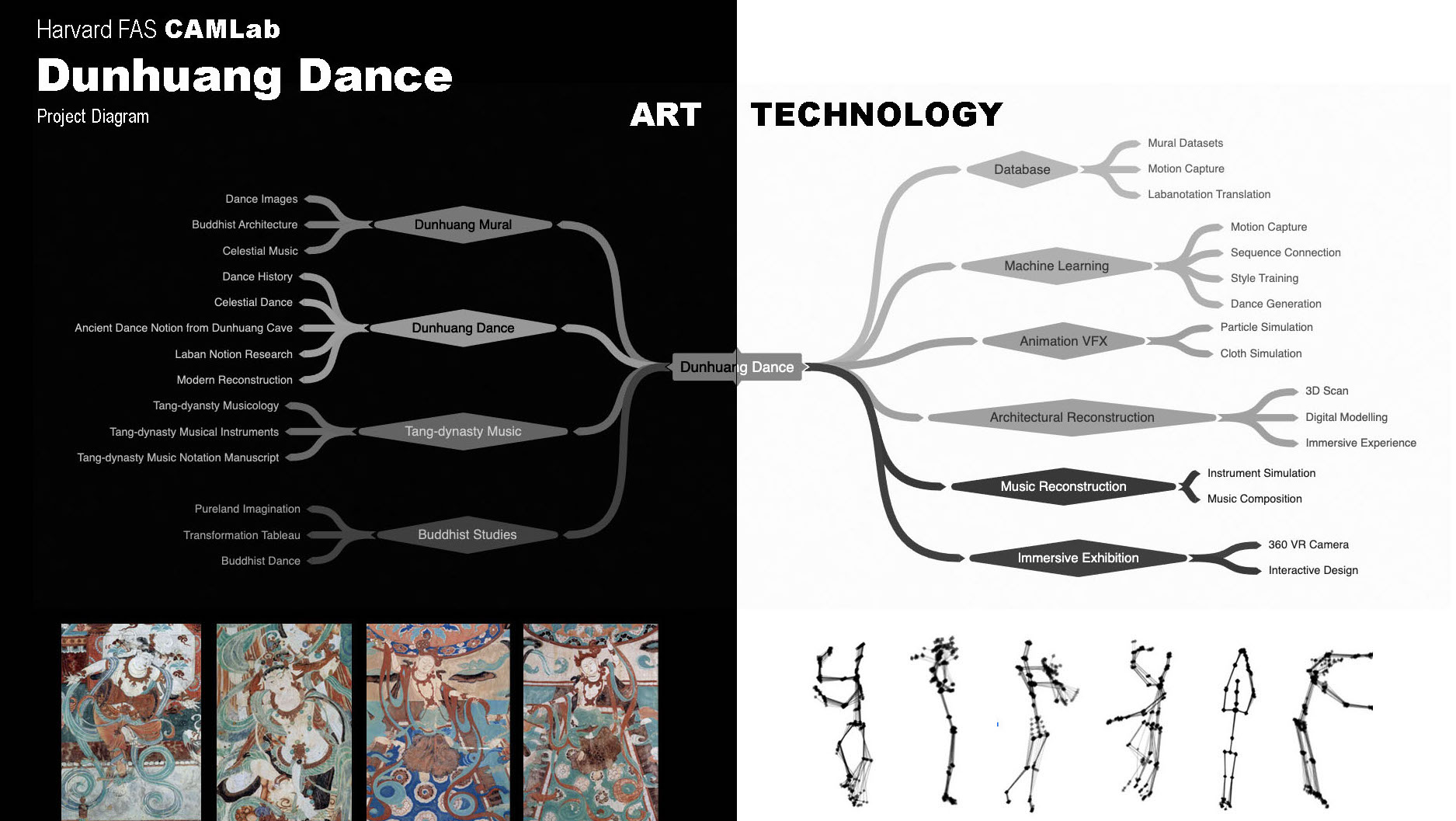About Cave Dance
One of the most significant cultural heritage sites in the world, Dunhuang preserves more than 400
embellished Buddhist cave shrines dating from the fifth century to the fourteenth century. Covered with
murals and sculptures, these cave shrines enclose visitors with an imaginary landscape of Buddhist
legends and paradises.Standing out from the rich visual culture of the Dunhuang caves, scenes of
celestial dance performances in Buddhist paradises are widely acclaimed as the most representative of
artistic achievements at Dunhuang. Held within Duhuang’s grand repository of ancient documents are
textual records of annotated movements for the wine dance, which combined performance and game to enact
intoxicated transcendence at banquets.
Based upon multi-year interdisciplinary research on the Buddhist culture of dance in Dunhuang, the
Cave Dance project harnesses the power of machine learning to bring new insights into the ancient
dance forms.
Data from static
mural drawings and motion capture of professional dancers were used to train a machine-learning
model, which generated a human-computer collaborative choreography of animated movement
sequences. Through this process, Cave Dance breathes new life into static dance paintings and
translates ancient texts; it presents a contemporary reconstruction—and imagination—of these
ancient dances.
Flowering from the diverse body of research of this interdisciplinary project, Cave Dance manifests as a
set of digital installations that elucidate the multifold culture of dance in Buddhist cave shrines. The
exhibition not only immerses the audiences in a dynamic world of Dunhuang dance, but also leads them
into the deeper cultural dimension of Buddhist dance—where audiences are invited to contemplate the
themes of body, life, and spiritual transcendence embodied by the celestial dance in the cave.
Born from the largest project team at CAMLab, Cave Dance brings together art historians, A.I.
scientists, data scientists, musicologists, choreographers, Buddhist scholars, architects, and digital
artists in a joint effort to bring the ancient Buddhist dance culture to life.
Data from static mural drawings and motion capture of professional dancers were used to train a machine-learning model, which generated a human-computer collaborative choreography of animated movement sequences. Through this process, Cave Dance breathes new life into static dance paintings and translates ancient texts; it presents a contemporary reconstruction—and imagination—of these ancient dances.




